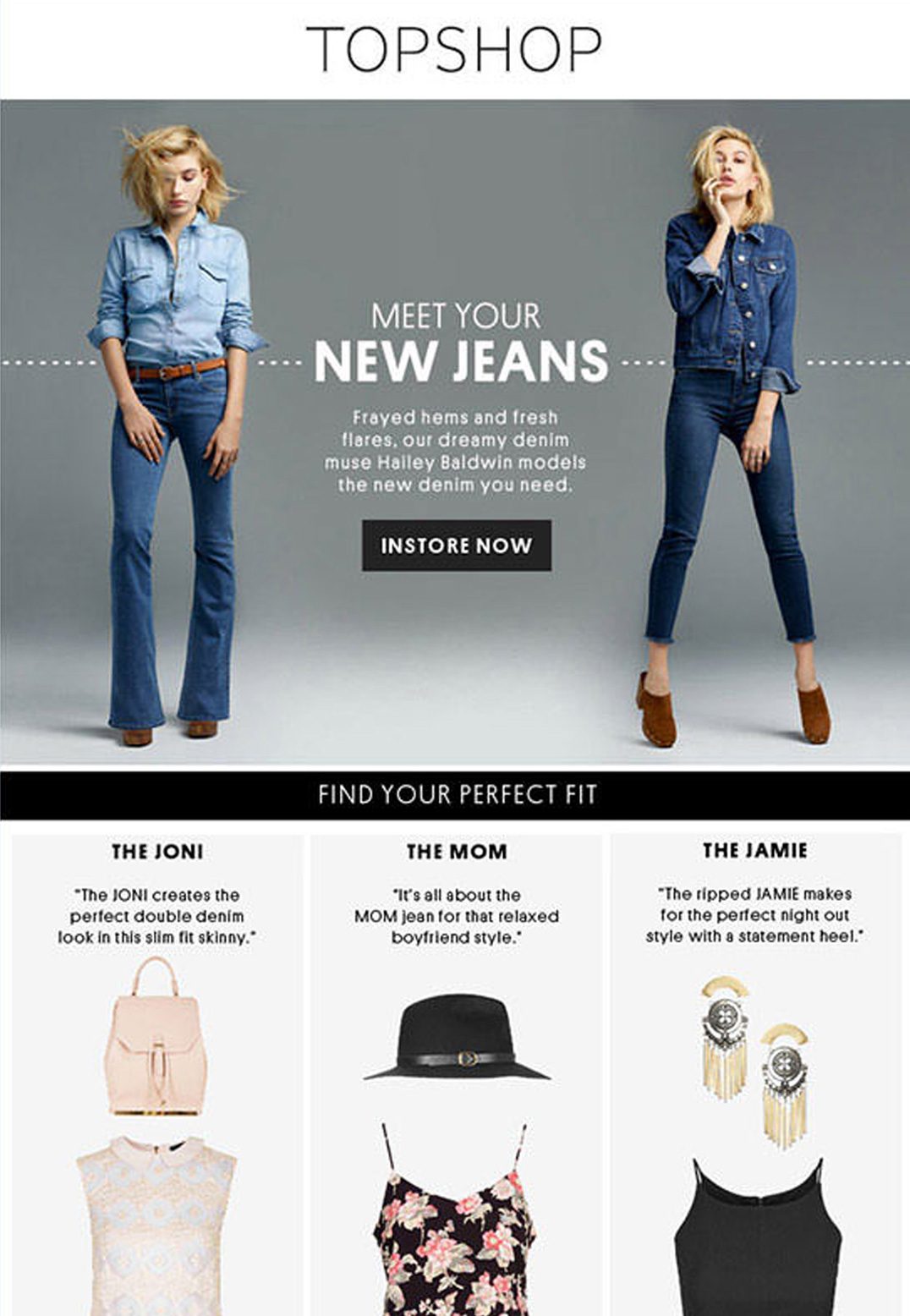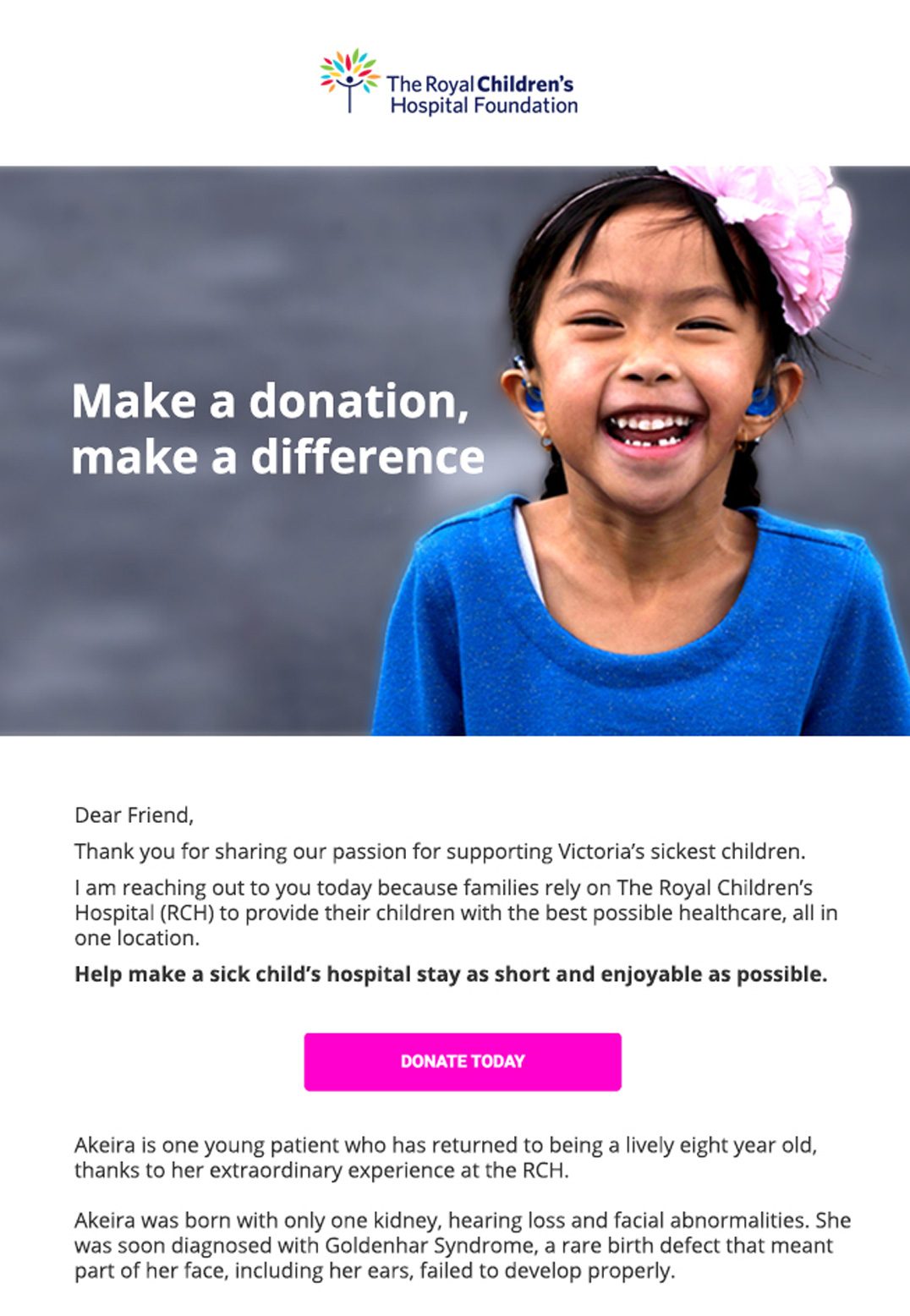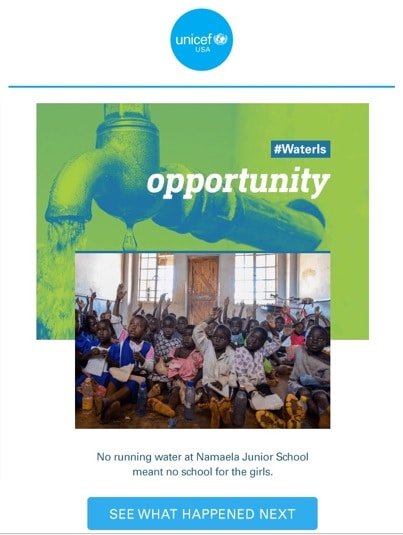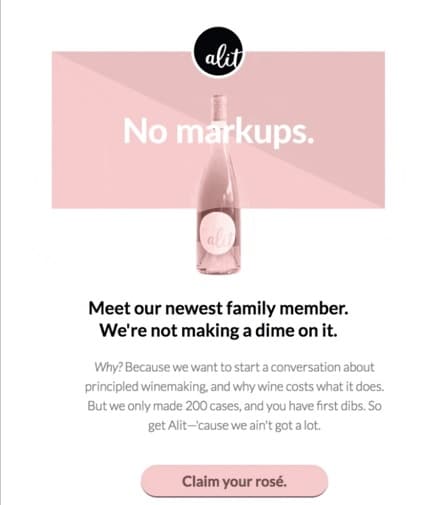Article first published April 2015, updated June 2019.
Writing great email copy can be challenging, yet it’s such a critical part of marketing success. With Facebook continuing to limit how many people see your posts and Twitter click-through rates declining, email is becoming an even more important channel for your business.
So how can you ensure your email copy is working to get you the maximum amount of clicks and conversions possible?
In this post, we’ll teach you the 4 Ps copywriting technique to help you write amazing email copy that gets results.
What is the 4 Ps technique?
The 4 P’s technique provides a framework for writing email copy that appeals to your customer’s desires. It is a conversion-oriented formula designed to make a particular offer (like a product, event or content piece) appeal to the wants and needs of your reader.
The technique has four parts to it, including:
1. Promise
You start by making a short, punchy promise to your readers. The key to this part of the technique is to make sure your promise speaks directly to the desires of your target market.
Here’s how we might do this if we were writing an email promoting the Campaign Monitor product:
Your email campaigns can be so great people that people can’t help but click-through to your website.
Our own research has shown us that the number one thing marketers care about when it comes to email is improving their open and click-through rates, so we’ve structured our promise to appeal directly to the things they care about.
2. Paint
Next, you need to paint a picture of what their world would look like after you’ve delivered on your promise. Again, the key to being successful with this is truly understanding what the ideal world looks like for your target customers and speaking directly to it.
Continuing our example from above, here’s how we might do this if we were writing an email promoting the Campaign Monitor product:
With those extra clicks comes extra visitors, and those extra visitors will convert into more sales and revenue.
Although our research shows improving metrics—like open and click-through rates—was the most important thing to marketers, we know the main reason they want to do that is because it results in more sales and revenue for their brand.
Given that is at the core of what they are trying to achieve, we talk directly to it to paint a picture of what their world would look like after we’ve delivered on our promise.
3. Proof
Now that you have made a bold promise and painted a picture of what their world looks like after you’ve delivered it, you need to give them proof that you can.
People are skeptical these days and don’t always believe the promises marketers make, so the key here is to show results that independent organisations have achieved using your product or service.
Here’s how we’d do this for Campaign Monitor:
In fact, when ConversionLab used Campaign Monitor to send a series of automated email campaigns, they were able to drive an extra $120,000 in revenue for their business.
Because we know increasing sales & revenue is what our target audience ultimately cares about, we used a story from one of our customers that specifically states the amount of extra revenue they were able to generate using Campaign Monitor.
This appeals to the target audience’s core desires and offers proof that the product can deliver on the promise being made earlier.
4. Push
Finally, with readers excited about your product, it’s time to push them to take action.
The key here is to relate your call to action back to the ideal world you painted for your readers earlier, as this reinforces the fact that your product is the path towards that ideal world.
Finishing up our example from before, here’s how we’d do this for the Campaign Monitor product:
So create your free account and start driving extra revenue for your business today!
As you can see, rather just going with a generic ‘Create your free account’ we tied it back to the picture we’d painted earlier, reinforcing that creating a free Campaign Monitor account is the path towards driving extra revenue for their business.
An example of the 4 Ps technique in action
To help show you how the 4 Ps formula can be put to use in email marketing campaigns, I quickly created two fictitious campaigns promoting the Campaign Monitor product. In one campaign I used the 4 Ps formula and in another I didn’t.
Without using the 4 Ps technique:
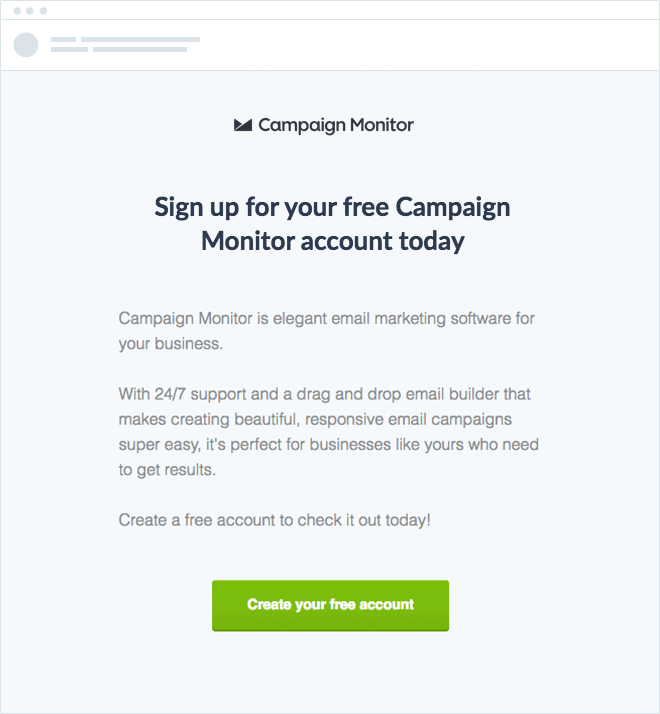
Using the 4 Ps technique:
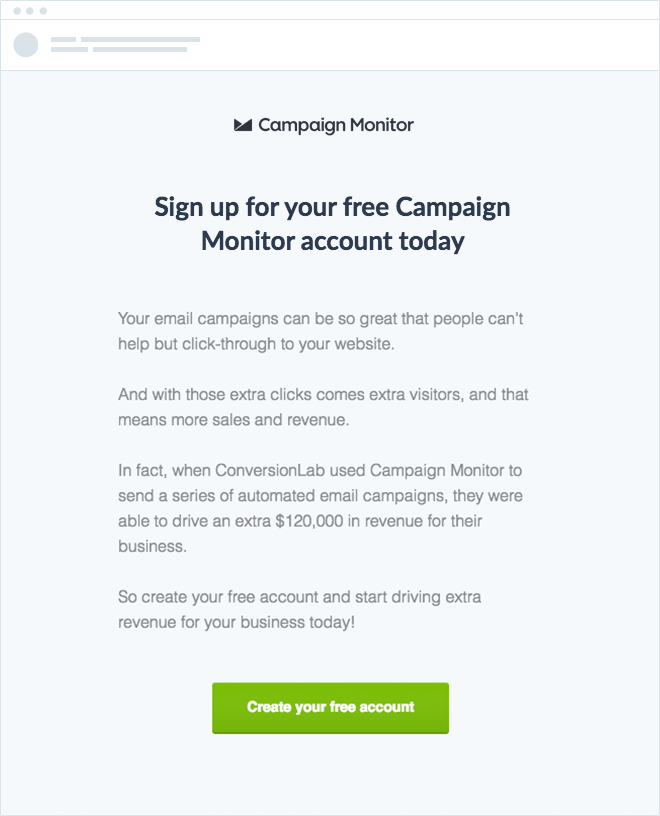
As you can see in the first email (without the 4 Ps technique), the copy doesn’t speak to the desires and goals of the target audience and instead focuses on the product’s features and support.
The second email, however, is completely focused on the customer. It makes a direct promise that appeals to the target market’s desires and goals and then backs it up with proof. It finishes up by positioning the Campaign Monitor product as the path to their desired world.
What’s missing from this technique?
One of the things you may have noticed that’s missing from the 4 Ps technique is any information about your product. Nowhere does it encourage you to mention price, features, support, or really anything about the product itself.
This is because when you have only a few lines of text to work with, these kind of details aren’t important. The only thing you want to be telling your readers is how your product or service will help them achieve the things they care about.
Once you’ve got them interested and clicking through to your website, then you can give them the further information they need to make a purchase. But when you only have a few lines to work with in your emails, you need to make them count.
Great copywriting in action
Now that you know the basics of the 4 P’s technique, let’s see how brands are putting it into practice in their email newsletter campaigns.
TopShop: The promise
Source: Campaign Monitor
The first step in creating enticing email content is to start with a promise. You don’t need to say something like, “Buy our jeans, and we guarantee they’ll be the best jeans you’ve ever tried.” Instead, appeal to your readers’ emotions. How do you want them to feel when they buy your product?
TopShop does a great job of this. They use alluring words that will appeal to their audience, like “fresh,” “dreamy,” and “muse.” Then they follow that up with saying that this is the denim you need. That’s the promise. It makes their subscribers want to know more. In essence, they’ve claimed that these will be your favorite jeans without coming out and saying it.
The Royal Children’s Hospital Foundation: Painting a picture
Source: Campaign Monitor
The next step is to paint a picture. How will your audience feel when they invest in your brand? How will their life—or the life of someone they care about—be improved by that investment?
The Royal Children’s Hospital Foundation does this in an interesting way. They don’t just ask for donations for a worthy cause. Doing that would likely get them some donations, but they’ve created an even more powerful email newsletter model.
Every time they send an email, they paint a picture by introducing their readers to one of their donation beneficiaries. Writing about a small child with a serious illness appeals to their readers’ hearts, it makes the situation tangible, and increases the likelihood that their readers will want to donate.
UNICEF: The proof
Source: Really Good Emails
Similar to The Royal Children’s Hospital Foundation, UNICEF not only paints a picture, but they also provide proof that the donations they receive are making a difference.
Proof is an important part of the 4 P’s Technique, whether you’re part of a charitable organization or a for-profit brand. Providing proof shows that you can back up the promise you made at the outset of your campaign. In other words, you’re not just making empty promises. You know that your product or service will impact your customers’ lives—now they’ll know, too, because of these concrete examples.
Alit Wines: The push (or an effective CTA)
Source: Really Good Emails
The final component of the 4 Ps Technique is the push, or the call to action (CTA).
Every single email you send out should have a clear CTA. Don’t just assume your audience will know what to do once they’ve read your stellar email copy. They need guidance.
Not only do you need a clear call to action, but you need one that packs a punch. A simple “Click here” could suffice in some instances. However, to make an impact and really move someone to action, you need something that grabs their attention.
In this example, the reader knows exactly what’s going to happen when they click the CTA button—they’re not going to be directed to the sender’s website to read a blog about rosé. They’re actually going to get a free rosé.
Wrap up
Using the 4 Ps technique is another great way to create email copy that improves your click-through rate.
The key to success with it is truly understanding the world your reader’s desire and then using that knowledge to paint a picture of how your product can help them get there.
So give the 4 Ps technique a try in your next email campaign and let us know how it goes for you!
Your turn: How do you feel about using copywriting techniques & formulas in your emails? We use them often and think they’re an easy way to write great email copy without spending hours on it, but we’d love to hear your thoughts in the comments below!
Want to improve your email marketing?
Join over 20,000 other marketers & designers who get tips on improving their email marketing delivered directly to their inbox.

